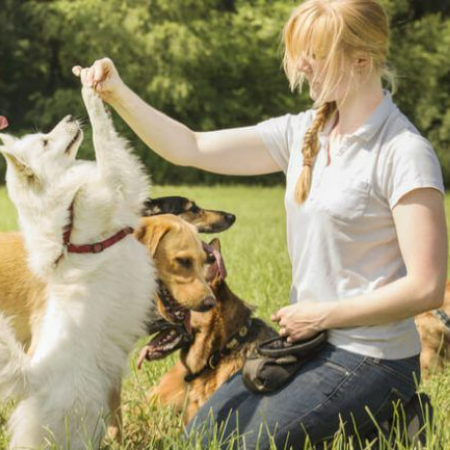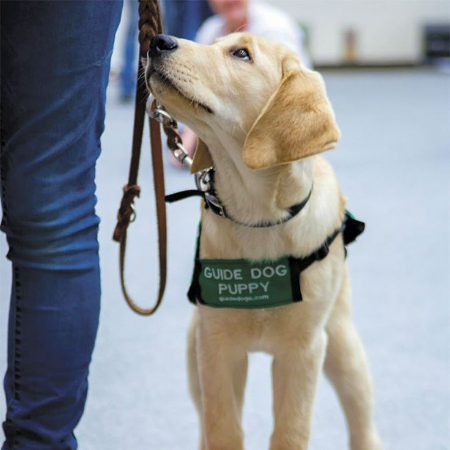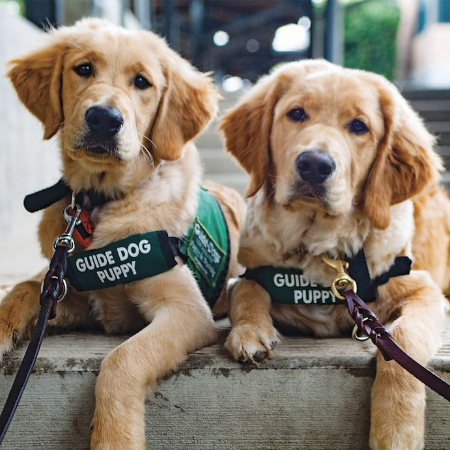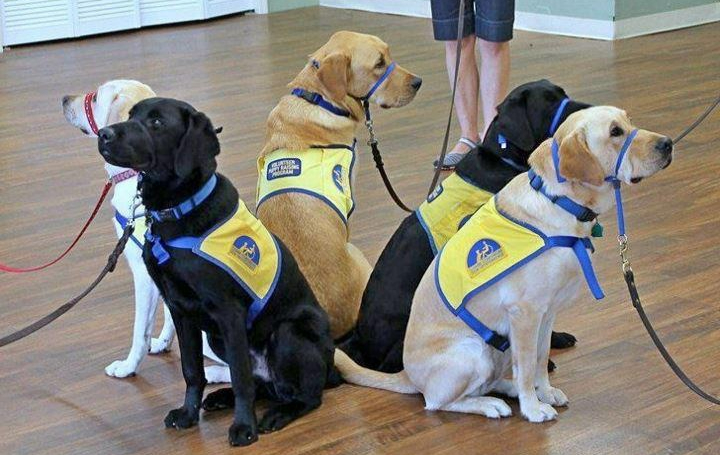The Secret Lives of Service Dogs: Training, Responsibilities, and Impact
More than just devoted friends, service dogs have expertly trained canines that carry out crucial duties to support individuals with impairments in leading more independent lives. These amazing canines are capable of helping with many different jobs, such as guiding the blind and warning the deafened of nearby noises.
This article delves into the world of service dogs, highlighting their training, duties, and significant influence on the lives of those they assist. It is an intriguing read.
What is a Service Dog?
A particular breed of working dog called a service dog is trained to help individuals with impairments. Service dogs are not pets; they have a purpose in life, and because of legal protections, they can go practically anywhere with their handlers, including restaurants, shops, and public transit.
Though they differ widely in appearance, size, and breed, all service dogs have one thing in common: they are remarkably adept at picking up new skills and carrying out activities that simplify the lives of their handlers. For the individuals they serve, these dogs frequently change lives; they are not only useful.
The Training Process
Service dog training is a thorough and meticulously planned process that starts when the dog is a little puppy and lasts for up to two years. The goal of each stage of this trip is to increase the dog’s proficiency and dependability as a service animal. Basic obedience training, the first stage, establishes the groundwork by teaching the dog fundamental commands like “sit,” “stay,” “come,” and “heel.” To make sure the dog responds consistently to these commands in any situation, they are practiced in multiple contexts.

After learning basic obedience, the dog moves on to public access training, where it receives instruction on how to act and travel in public areas. Because service dogs frequently accompany their handlers into crowded, noisy places like restaurants, grocery shops, and public transportation, this training is essential. Task training is the last and most important step, during which the dog learns specific tasks that are adapted to the demands of the handler.
This could be helping someone who is blind or visually challenged navigate, helping them move around by getting objects or opening doors, or even just lending a hand physically by pushing a wheelchair. Each of these responsibilities calls for accuracy and commitment, guaranteeing that the service dog can carry out its responsibilities with dependability and effectiveness, significantly improving the life of its handler.
Interesting Fact: The Intelligence of Service Dogs
It’s possible that certain service dogs can comprehend more than forty commands. Simple directions like “sit” or “stay” are among them, as are more sophisticated directives like “find the exit” or “pick up the keys.” Among other working animals, service dogs are unique due to their intellect and capacity for learning commands.
Responsibilities of a Service Dog
The wide range of duties performed by a service dog is customized to match the particular requirements of their owner. Guide dogs are vital companions for people who are blind or visually impaired. They help their owners navigate the world around them by avoiding obstacles, pulling over at curbs, and watching out for them in potentially dangerous circumstances.

Hearing dogs are invaluable to people who are hard of hearing or deaf because they can detect sounds that are vital to them, such as smoke alarms, doorbells, or a screaming baby, by nudging or pawing at them. Medical alert dogs are specifically taught to recognize warning symptoms of medical emergencies, such as approaching seizures or severe dips in blood sugar levels in diabetics.
This allows their handler to take appropriate action, such as obtaining medication or contacting emergency services, if needed. By carrying out duties including opening doors, turning on and off lights, retrieving objects, and offering stability to help their handler maintain balance when walking, mobility assistance dogs provide essential support to people with physical limitations. These diverse duties serve as a reminder of the priceless contribution service dogs provide to their handlers’ increased freedom and security.
Interesting Fact: Dogs Can Smell Medical Conditions
Service dogs have an extraordinary sense of smell, which is one of their most astounding qualities. An olfactory system in a dog can be up to 100,000 times more sensitive than one in a human. Because of this, they can identify alterations in their handler’s body chemistry, such as a decrease in blood sugar in diabetics or the start of seizures in epileptics. Even certain dog breeds are trained to recognize specific cancers!
The Impact of Service Dogs
Service dogs have a profound effect on their handlers’ lives that goes far beyond providing them with physical help. Not only can these amazing animals help with everyday activities, but they also give many disabled individuals emotional support, companionship, and a fresh sense of independence that would otherwise be unattainable. For example, having a service dog can significantly boost a handler’s independence.

The quality of life for the handler and their loved ones can be significantly enhanced by using a service dog to help with tasks that previously required regular support from others, such as opening doors or retrieving goods. Beyond only providing physical assistance, a service dog and its handler form an extremely strong emotional attachment. These dogs calm their owners down in tense situations, lessen anxiety, and increase their sense of security, particularly in strange places.
Furthermore, service dogs frequently work as social bridges, lowering boundaries and promoting communication with others. Because people are inherently fascinated by service dogs, they may interact with their handlers to find out more, which promotes a feeling of community and connection. People with disabilities may find that this enhanced social interaction makes them feel more included and connected to the world around them.
Interesting Fact: The Cost of Training a Service Dog
The price of training a service dog can range from $15,000 to $50,000 per animal. This price covers every aspect of the puppy’s upbringing, including initial puppy selection, food, and rigorous training. To pay for these expenses and make these life-changing animals available to people who need them the most, many organizations that supply service dogs rely on donations and sponsorships.
Challenges of Being a Service Dog Handler
Although service dogs are incredibly helpful, handling them has its share of difficulties. Owners are responsible for making sure their dog receives proper care, which includes frequent feeding, brushing, and trips to the vet.

Furthermore, the handler is responsible for upholding the dog’s discipline and training, since a service dog needs to be dependable and attentive at all times. The use of service dogs is expected to increase as long as technology and training methods keep up with the times.
Researchers are looking into how to train canines to aid with even more difficult jobs, such as helping people with mental health issues like PTSD or even identifying particular allergens. Service dogs have a bright future ahead of them, and their positive effects on the lives of those with disabilities won’t stop.
Conclusion
Service dogs are amazing creatures. They have remarkable training, and duties, and an incredible impact on the lives of their handlers. These canines offer independence, friendship, and a lifeline to a higher standard of living in addition to physical support.
One thing is for sure: one paw at a time, service dogs will continue to improve lives as we continue to discover more about their amazing skills.
Doglime for more dog-related information.
Tags










